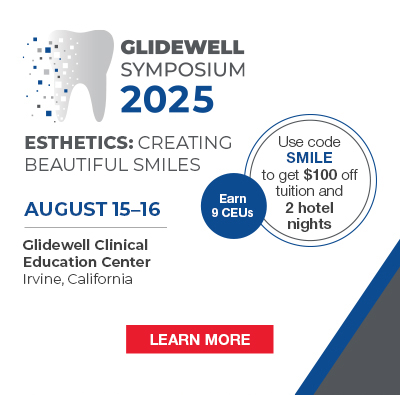Considering the advances in technology over the last 10 years, dentistry today is much more than traditional “drilling and filling.” Dentists have an opportunity now to treat the “whole” patient in a more comprehensive, health-centered way. Not only does the entire dental team have a new perspective on their roles as healthcare providers when the practice has a “whole patient” philosophy, but patients do too. They begin to see a trip to the dentist in an entirely different way, which translates into patient loyalty, positive word of mouth, and compliance with recommendations.
“MAKING GOOD” ON PRACTICE DISTINCTION
 |
 |
|---|---|
| Figure 1. All of the components needed to perform a brush biopsy and instructions for use are included in the OralCDx test kit. | Figure 2. Small white lesion in the floor of the mouth that proved “atypical” with the brush biopsy and a precancer by scalpel biopsy. |
 |
 |
|---|
|
Figures 3a and 3b. Examples of harmless-looking white and red lesions that were confirmed precancers.
|
|---|
In our on-hold button message, we talk about being a health-centered practice. We do blood pressure testing, help our patients to quit smoking, recommend changes in diet and nutrition, and promote as a number one priority the benefits of early detection and early treatment. Regular oral cancer screening using the OralCDx system (CDx Laboratories) testing allows us to make good on that claim.
CHANGING ROUTINE
We have found integrating early oral cancer detection into our “whole patient” care philosophy to be very simple, particularly when it involves the entire dental team.
nbsp;
CONCLUSION
These days, everyone knows of a friend, family member, or perhaps even a celebrity who has experienced a small problem and thought it was insignificant, only to learn later that a serious or even life-threatening situation existed. Oral cancer is no different. What starts out as a harmless-appearing spot or sore can over time advance to a debilitating and possibly disfiguring disease. Treatment for late-stage oral cancer is often devastating, and prognosis for oral cancer patients has not improved for 40 years. With the approach described in this article involving the dental hygienist and team, dentists can rule out the possibility of serious disease by testing the common white or red spots at an early stage (Figures 3a and 3b). Within a few days of testing, the dentist has either identified a serious problem or can reassure the patient that everything is fine.
Dr. Doring maintains a full-time private practice in Edgewater, Md, emphasizing comprehensive dentistry. A 1984 honors graduate from the University of Maryland Dental School, he completed a general practice and anesthesia residency before entering private practice. He is a master in the Academy of General Dentistry, a fellow in the American and International Colleges of Dentistry, and a fellow of the Pierre Fauchard Academy. He has been featured in various dental journals such as Dentistry Today and the Journal of the American Dental Association and has lectured to various professional groups. A delegate to the ADA as well as the Maryland State Dental Association, he can be reached at (410) 956-2505, kdoring@msn.com, or visit doringdds.com.




